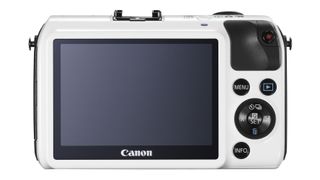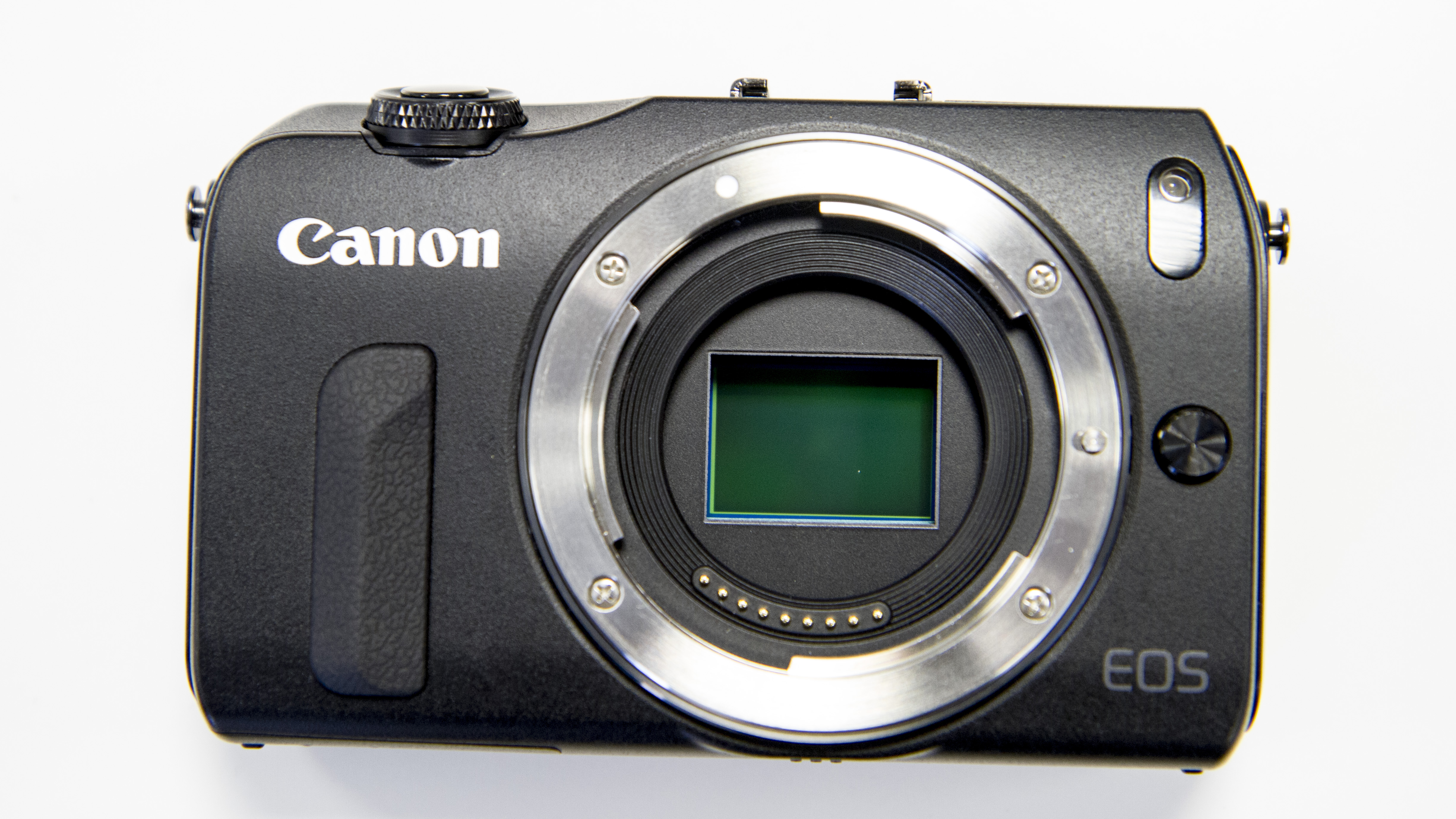TechRadar Verdict
Pros
- +
18MP APS-C sensor
- +
DIGIC 5 processor
- +
Small size
- +
High-build quality
- +
Excellent touchscreen
Cons
- -
AF system a bit slow
- -
No optional EVF
- -
No built-in flash
- -
High price
Why you can trust TechRadar
Canon hasn't exactly been quick out of the blocks in the race to launch compact system cameras and its first, the EOS M, comes four years after Panasonic kicked-off the whole shebang back in September 2008 with the launch of the Lumix G1.
Unlike some compact system cameras, however, the Canon M has an APS-C format sensor.
In fact it has the same 18MP CMOS sensor and DIGIC 5 processor as the Canon 650D, so in theory at least it could be capable of matching one of Canon's most recent SLRs for image quality.
This could set the EOS M ahead of cameras such as the Nikon J2, Nikon V2, Pentax Q, Pentax Q10 and even the Panasonic G5 and Olympus E-PL5, which have smaller sensors.

Although Canon has used the same sensor in the M as is in its EOS 650D, omitting the mirror and shifting the lens mount closer to the sensor means that a new breed of lenses is required. Consequently, Canon has introduced a new mount for the M, the EF-M.
Canon has launched two new EF-M lenses to complement the EOS M; the EF-M 18-55mm f/3.5-5.6 IS STM and the EF-M 22mm f/2.0 STM.
The 18-55mm is likely to be the most popular, since it's more versatile: it's noticeably smaller and considerably better built than the current EF-S 18-55mm lens, with a metal, rather than plastic, barrel and mount.

Meanwhile, the EF-M 22mm f/2.0 pancake lens perhaps gives away Canon's aspiration to create a CSC that also appeals to enthusiast photographers, since it is these users who are more likely to appreciate the benefit of such a wide maximum aperture and a fixed focal length.
Existing Canon users may be pleased to learn that Canon has also unveiled the Mount Adapter EF-EOS M, which enables EF and EF-S lenses to be mounted onto the EOS M.
This contains no optics, but has contacts to enable communication between the camera and optic.
Features
Canon has given the EOS M many of the features that the EOS 650D has for use in live view mode and in addition to the 18MP APS-C format (22.3x14.9mm) CMOS sensor and DIGIC 5 processor, there's the 31-point Hybrid AF system that was debuted by the 650D.

This system is intended to combine the speed of phase detection with the accuracy of contrast detection AF.
The screen is also the same 3-inch 1,0404,000-dot touch-sensitive device as is found on the 650D, but it's fixed rather than mounted on an articulating hinge.
Canon EOS M at a glance
Sensor:
18MP APS-C format (22.3x14.9mm)
Crop factor:
1.6x
Memory:
SD/SDHC/SDXC
Viewfinder:
None
LCD:
3-inch 1,0404,000-dot touchscreen
Video:
1920x1080 at 30, 25 or 24fps
ISO range:
100-12,800 expandable to 25,600
Autofocus:
31-point Hybrid system
Max burst rate:
4.3fps
Dimensions:
108.6 x 66.5 x 32.3 mm
Weight:
298g (including battery and card)
This is the only means of composing and reviewing images on the M as it doesn't have a viewfinder and there's no port to attach an external electronic viewfinder (EVF).
There's also no built-in flash on the M, but it does have a hotshoe that is compatible with all Canon's current flashguns.

There's also a new Speedlite 90EX flashgun that is very compact and specifically designed to complement the M. In the UK this is included in the box with the camera and lens.
Although it has the same sensor and processing engine as the 650D, a difference in the shutter build means that the M has a maximum continuous shooting rate of 4fps rather than 5fps.
Canon says it is aiming the EOS M at people who wouldn't have considered buying an EOS camera before; those who like the small size and simplicity of a compact camera but who want to take better quality images.

Naturally, then, Canon has given these users a healthy collection of automated shooting modes such as Scene Intelligent Auto, in which the camera selects the settings to suit the scene automatically, as well as a collection of scene modes that the user can select to match the subject.
Those looking to develop their understanding of photography will find the M's Creative Auto mode useful; it's essentially a form of aperture priority mode, but adjustments are made via an onscreen display that allows the user to choose whether they want the background sharp or blurred.
Canon hasn't abandoned its existing EOS users who want a smaller alternative to their SLR, however, as program, shutter priority, aperture priority and manual exposure modes are also present.

In addition to the Picture Style options that we see with Canon's SLRs and that tailor the colour of JPEG files to suit a particular subject (landscape, portrait), the EOS M has a collection of Creative Effects that give JPEG images a particular look as they are captured.
Similar effects are possible with the Canon 650D, but they can only be applied post-capture.
It's worth noting here that although the Picture Style options can be used whatever the file format you choose to store images in, the Creative Effects options can only be selected when the M is set to shoot JPEGs and not raw files.

I can't believe there's another record-low price for the Xbox Elite Wireless Controller Series 2 ahead of Christmas
How to watch Doctor Who: The War Games in Colour – stream remastered classic adventure from anywhere in time and space

Prime Video movie of the day: After Hours is a classic comedy with a very dark sense of humor
